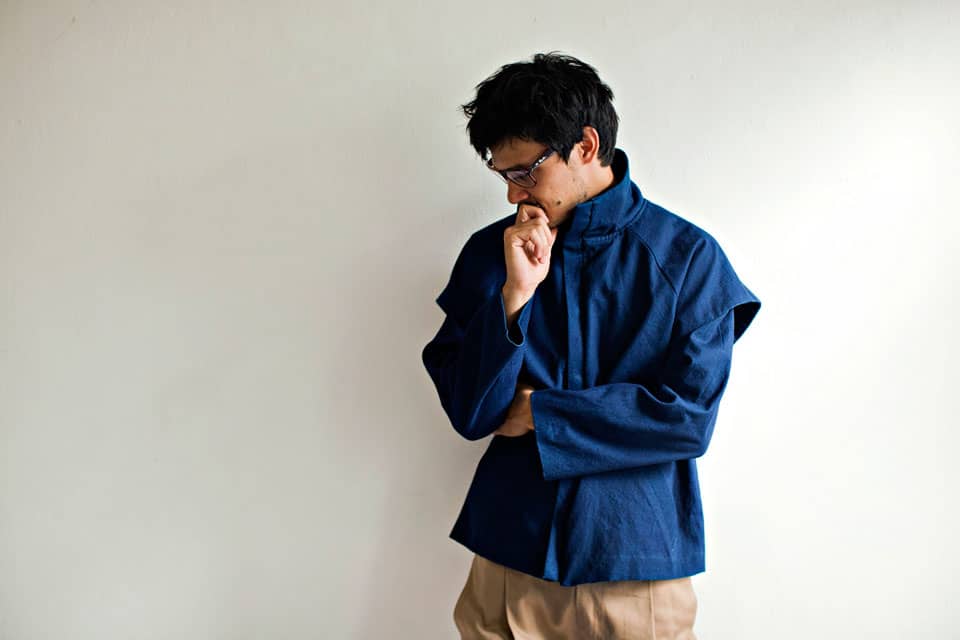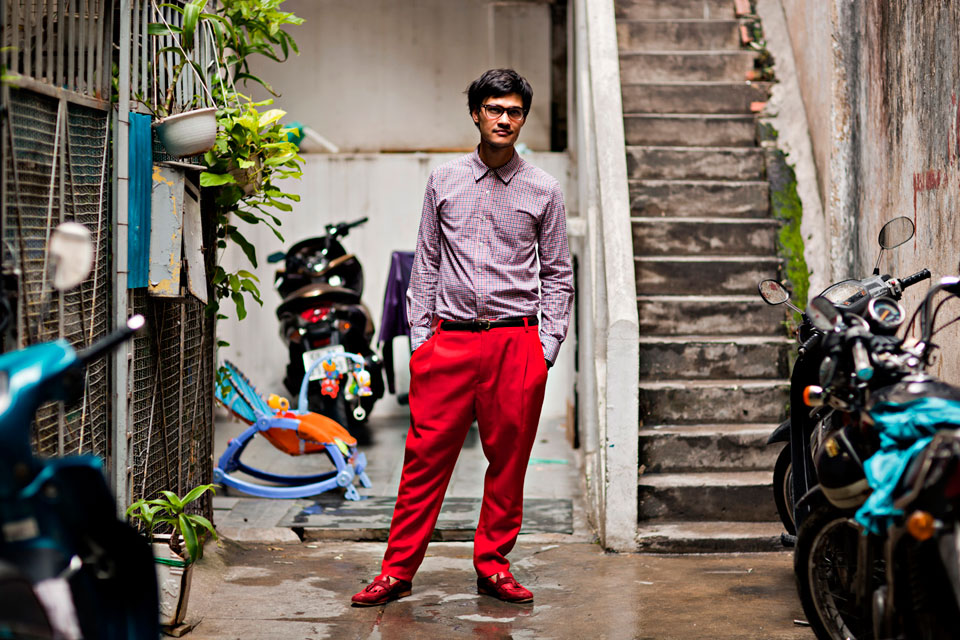To highlight the clothes currently inhabiting our fantasy wardrobe, we've teamed up with vitaminwater and asked The FADER's extended family of photographers, stylists and models to pool their talents and showcase some of the best threads around. Each Styled by FADER will feature a different brand's collection of the season that sits at the top of our most-wanted list. This week, we bring you Mjolk. Click through the slideshow to see more photos from the shoot and to read our thoughts about the brand.

Mjolk's designer Lars Stoten has a crystal clear vision for what he wants from his clothes. Season after season, he starts with a reference, say, The Lost Generation and Ernest Hemingway or soft jersey sweats and puts it through a colorful looking glass, blowing up silhouettes to be beautifully bulky or shrinking them to give everything a little-boy-blue vibe. He's created a Mjolk man—slightly androgynous, a bit slouchy but always impeccable. And Stoten is his own best model; see him around town and it's like one of his lookbooks come to life. We interviewed him about his latest season, which featured some amazing neon knits. Start reading on the next page.

Click through for more story.
How do you think you fit into the menswear world and all of the heritage clothes currently on trend? Well, I think there’s a significant difference between conceptual design and trend-based design. I think a lot of the stuff you see, in particular this season, a lot of those menswear designers may or may not necessarily have a background in design. For so many people, it’s more of a wholesale business based thing, what sells well within a buying frame, what fits well with buyers.
But don’t you have to think commercially? Obviously I have to do the same thing. But I strive to find a balance. For any designer, the biggest challenge, if you’re serious, if you pay your rent from what you do, is a constant walking of a line between wearability but also having a point of difference, to be original. I think it was Hedi Slimane who said it recently in an interview: there’s a significant difference between menswear and men’s fashion. Mjolk hopes to be men’s fashion.
Is there a gender component to that divide? Is men’s fashion a bit more androgynous than menswear? With menswear, there is a distinct decision to follow what has been done in the past and what is stereotypically male. People always tell me that my stuff is quite feminine, but that’s not even a question in my mind. I design garments that I would wear myself.

Click through for more story.
Are you commercial enough? I have a really tight team here and obviously my responsibility as the head of it is constantly worrying about them being taken care of financially. In the economic turmoil, we lost a good 40% of our business. We kept a lot of the same stores apart from the ones that literally closed their doors in Japan, but the orders just dropped. I think, having said that, we do cover ourselves, we live off it, you know. With the new spring stuff, I hope there’s some really buyable pieces in it. I have to sell, I need the bread and butter. But a part of me finds it so difficult to jump on the trend wagon.
One of the things that stands out about Mjolk is shape. The clothes have these really interesting silhouettes and proportions. Years ago I worked for a guy in Japan. He’s traditionally a Japanese costume theater designer. He taught me, in terms of construction, to literally work with fabric like it was paper. He would fold the fabric and construct the garment completely on the dress form. It was phenomenal. And I enjoy doing the same thing. I don’t do it as much physically as I would like to, to actually sit down and fold, because it’s so time consuming. I think about the blocks in male form and then I think about filling them in with shape. It's a form, it's a shape. And that is important in two ways. It creates a continuity in the collection. If you're draping in a certain way and creating certain silhouettes and certain block shapes, that is your collection. You can mix color into it, but what keeps continuity through the range is the actual form. And the other thing is that even if a piece is beautiful and really easy on the eye, in terms of actual engineering on the particular garment, in order for it to hold that shape, it's got its own secret world.
It’s more of a challenge for you. Yeah, without a doubt. For me it’s always about having a pride in what I do and also trying to create longevity. And I hate to use the word, but there’s a branding exercise going on there as well. You’ve got to show that you’re more than most.

Photography Dorothy Hong. Styling Mobolaji Dawodu. Model Olivier Llouquet. All clothes by Mjolk.



